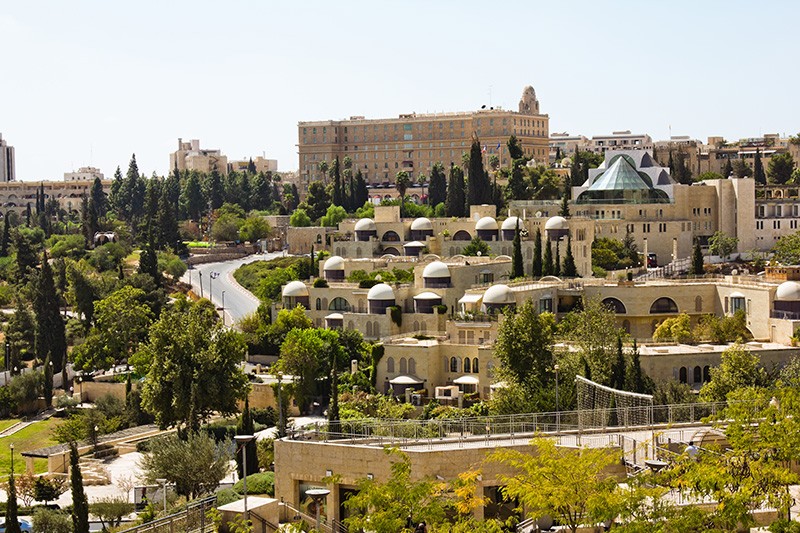
Mamilla
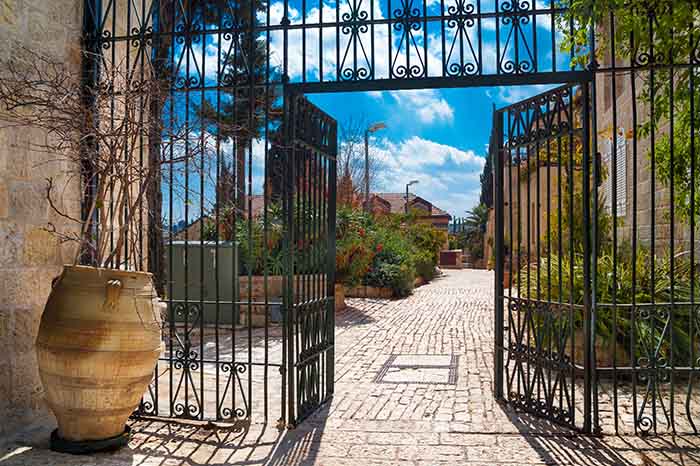
The pedestrian only, upscale Mamilla Mall was opened in 2007-2008 as the only open air mall in Jerusalem. At one end is Jaffa Gate and the other is King David Street. It has 140 boutique and chain stores. It is possible to wine and dine in the terrace restaurants while the sun is setting overhead over the magestic walls of the Old City with views of the Towers of David and Jaffa Gate.
The Mamilla Mall was designed by Israeli architect Moshe Safdie. The area its situated on has historial and archaeoglical importance which he tried to blend into the mall’s construction and surrounding areas. As such, he chose materials and construction styles of the historic Mamilla neighbourhood, using masonry-block contruction and arches taken from the 19th century buildings which lined the original Mamilla Street.
The buildings along the Mamilla boulevard are purposely not evenly speaced allowing for plenty of open areas between the buildings which host different types of public areas. There is also an indoor two storey mall housing boutiques, stores and restaurants.
There are changing art and sculpture exhibits along the promenade which are all by local artists with most being for sale, giving the mall even more character. There are free concerts during the summer and Jewish holidays, street performances and family activities. On Chanukkah with the lighting of the large menorah, there is a special concert every night hosting different famous religious Jewish singers.
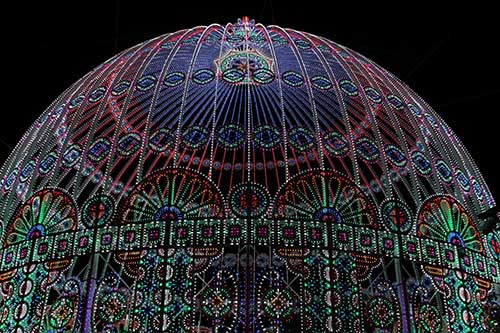
OUR RECOMMENDATIONS:
Several historic buildings were integrated into the mall design including:
- Clark House, an 1898 structure built by American evangelists living in Jerusalem and stands on its original site.
- Convent of St. Vincent de Paul, operated by French nuns. This housed an orphanage, old-age home, and a shelter for mentally and physically handicapped people, and was the initial structure to be erected on Mamilla Street, in 1886occupying its original site.
- Stern House, a private home in Theodor Herzl had lodged overnight during his 1898 visit to Jerusalem. The room in which Herzl slept now hosts photos and memorabilia from Herzl’s life. The house was heavily damaged in the 1948 war of Independence, but was eventually preserved. The two-story masonry-block house, originally located at 18 Mamilla Street, was dismantled brick by brick and warehoused for ten years until builders were ready to reassemble it on Alrov Mamilla Avenue. Safdie left the colored numbers on the brick facades of this and other preserved houses to emphasize the preservation nature of the work. Thesed can be seen today. Today, the Stern House houses a restaurant, bar, and Steimatsky bookstore and is located in the middle of the mall.
- Seven additional 19th-century buildings were dismantled, warehoused, and reconstructed along the promenade.
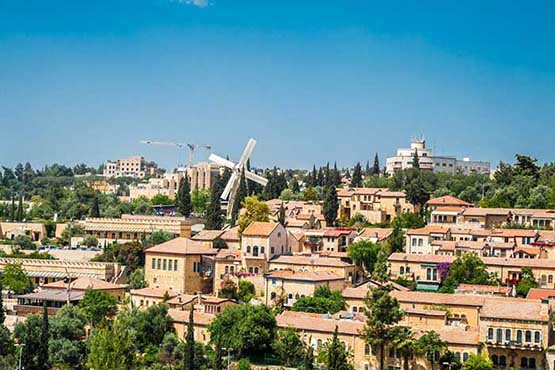
Mamilla

The pedestrian only, upscale Mamilla Mall was opened in 2007-2008 as the only open air mall in Jerusalem. At one end is Jaffa Gate and the other is King David Street. It has 140 boutique and chain stores. It is possible to wine and dine in the terrace restaurants while the sun is setting overhead over the magestic walls of the Old City with views of the Towers of David and Jaffa Gate.
The Mamilla Mall was designed by Israeli architect Moshe Safdie. The area its situated on has historial and archaeoglical importance which he tried to blend into the mall’s construction and surrounding areas. As such, he chose materials and construction styles of the historic Mamilla neighbourhood, using masonry-block contruction and arches taken from the 19th century buildings which lined the original Mamilla Street.
The buildings along the Mamilla boulevard are purposely not evenly speaced allowing for plenty of open areas between the buildings which host different types of public areas. There is also an indoor two storey mall housing boutiques, stores and restaurants.
There are changing art and sculpture exhibits along the promenade which are all by local artists with most being for sale, giving the mall even more character. There are free concerts during the summer and Jewish holidays, street performances and family activities. On Chanukkah with the lighting of the large menorah, there is a special concert every night hosting different famous religious Jewish singers.

OUR RECOMMENDATIONS:
Several historic buildings were integrated into the mall design including:
- Clark House, an 1898 structure built by American evangelists living in Jerusalem and stands on its original site.
- Convent of St. Vincent de Paul, operated by French nuns. This housed an orphanage, old-age home, and a shelter for mentally and physically handicapped people, and was the initial structure to be erected on Mamilla Street, in 1886occupying its original site.
- Stern House, a private home in Theodor Herzl had lodged overnight during his 1898 visit to Jerusalem. The room in which Herzl slept now hosts photos and memorabilia from Herzl’s life. The house was heavily damaged in the 1948 war of Independence, but was eventually preserved. The two-story masonry-block house, originally located at 18 Mamilla Street, was dismantled brick by brick and warehoused for ten years until builders were ready to reassemble it on Alrov Mamilla Avenue. Safdie left the colored numbers on the brick facades of this and other preserved houses to emphasize the preservation nature of the work. Thesed can be seen today. Today, the Stern House houses a restaurant, bar, and Steimatsky bookstore and is located in the middle of the mall.
- Seven additional 19th-century buildings were dismantled, warehoused, and reconstructed along the promenade.
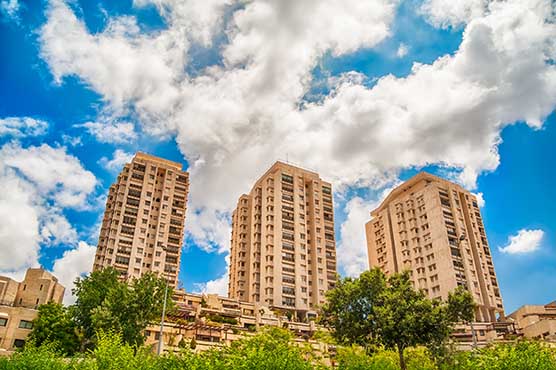
Mamilla

The pedestrian only, upscale Mamilla Mall was opened in 2007-2008 as the only open air mall in Jerusalem. At one end is Jaffa Gate and the other is King David Street. It has 140 boutique and chain stores. It is possible to wine and dine in the terrace restaurants while the sun is setting overhead over the magestic walls of the Old City with views of the Towers of David and Jaffa Gate.
The Mamilla Mall was designed by Israeli architect Moshe Safdie. The area its situated on has historial and archaeoglical importance which he tried to blend into the mall’s construction and surrounding areas. As such, he chose materials and construction styles of the historic Mamilla neighbourhood, using masonry-block contruction and arches taken from the 19th century buildings which lined the original Mamilla Street.
The buildings along the Mamilla boulevard are purposely not evenly speaced allowing for plenty of open areas between the buildings which host different types of public areas. There is also an indoor two storey mall housing boutiques, stores and restaurants.
There are changing art and sculpture exhibits along the promenade which are all by local artists with most being for sale, giving the mall even more character. There are free concerts during the summer and Jewish holidays, street performances and family activities. On Chanukkah with the lighting of the large menorah, there is a special concert every night hosting different famous religious Jewish singers.

OUR RECOMMENDATIONS:
Several historic buildings were integrated into the mall design including:
- Clark House, an 1898 structure built by American evangelists living in Jerusalem and stands on its original site.
- Convent of St. Vincent de Paul, operated by French nuns. This housed an orphanage, old-age home, and a shelter for mentally and physically handicapped people, and was the initial structure to be erected on Mamilla Street, in 1886occupying its original site.
- Stern House, a private home in Theodor Herzl had lodged overnight during his 1898 visit to Jerusalem. The room in which Herzl slept now hosts photos and memorabilia from Herzl’s life. The house was heavily damaged in the 1948 war of Independence, but was eventually preserved. The two-story masonry-block house, originally located at 18 Mamilla Street, was dismantled brick by brick and warehoused for ten years until builders were ready to reassemble it on Alrov Mamilla Avenue. Safdie left the colored numbers on the brick facades of this and other preserved houses to emphasize the preservation nature of the work. Thesed can be seen today. Today, the Stern House houses a restaurant, bar, and Steimatsky bookstore and is located in the middle of the mall.
- Seven additional 19th-century buildings were dismantled, warehoused, and reconstructed along the promenade.

Mamilla

The pedestrian only, upscale Mamilla Mall was opened in 2007-2008 as the only open air mall in Jerusalem. At one end is Jaffa Gate and the other is King David Street. It has 140 boutique and chain stores. It is possible to wine and dine in the terrace restaurants while the sun is setting overhead over the magestic walls of the Old City with views of the Towers of David and Jaffa Gate.
The Mamilla Mall was designed by Israeli architect Moshe Safdie. The area its situated on has historial and archaeoglical importance which he tried to blend into the mall’s construction and surrounding areas. As such, he chose materials and construction styles of the historic Mamilla neighbourhood, using masonry-block contruction and arches taken from the 19th century buildings which lined the original Mamilla Street.
The buildings along the Mamilla boulevard are purposely not evenly speaced allowing for plenty of open areas between the buildings which host different types of public areas. There is also an indoor two storey mall housing boutiques, stores and restaurants.
There are changing art and sculpture exhibits along the promenade which are all by local artists with most being for sale, giving the mall even more character. There are free concerts during the summer and Jewish holidays, street performances and family activities. On Chanukkah with the lighting of the large menorah, there is a special concert every night hosting different famous religious Jewish singers.

OUR RECOMMENDATIONS:
Several historic buildings were integrated into the mall design including:
- Clark House, an 1898 structure built by American evangelists living in Jerusalem and stands on its original site.
- Convent of St. Vincent de Paul, operated by French nuns. This housed an orphanage, old-age home, and a shelter for mentally and physically handicapped people, and was the initial structure to be erected on Mamilla Street, in 1886occupying its original site.
- Stern House, a private home in Theodor Herzl had lodged overnight during his 1898 visit to Jerusalem. The room in which Herzl slept now hosts photos and memorabilia from Herzl’s life. The house was heavily damaged in the 1948 war of Independence, but was eventually preserved. The two-story masonry-block house, originally located at 18 Mamilla Street, was dismantled brick by brick and warehoused for ten years until builders were ready to reassemble it on Alrov Mamilla Avenue. Safdie left the colored numbers on the brick facades of this and other preserved houses to emphasize the preservation nature of the work. Thesed can be seen today. Today, the Stern House houses a restaurant, bar, and Steimatsky bookstore and is located in the middle of the mall.
- Seven additional 19th-century buildings were dismantled, warehoused, and reconstructed along the promenade.

Mamilla

The pedestrian only, upscale Mamilla Mall was opened in 2007-2008 as the only open air mall in Jerusalem. At one end is Jaffa Gate and the other is King David Street. It has 140 boutique and chain stores. It is possible to wine and dine in the terrace restaurants while the sun is setting overhead over the magestic walls of the Old City with views of the Towers of David and Jaffa Gate.
The Mamilla Mall was designed by Israeli architect Moshe Safdie. The area its situated on has historial and archaeoglical importance which he tried to blend into the mall’s construction and surrounding areas. As such, he chose materials and construction styles of the historic Mamilla neighbourhood, using masonry-block contruction and arches taken from the 19th century buildings which lined the original Mamilla Street.
The buildings along the Mamilla boulevard are purposely not evenly speaced allowing for plenty of open areas between the buildings which host different types of public areas. There is also an indoor two storey mall housing boutiques, stores and restaurants.
There are changing art and sculpture exhibits along the promenade which are all by local artists with most being for sale, giving the mall even more character. There are free concerts during the summer and Jewish holidays, street performances and family activities. On Chanukkah with the lighting of the large menorah, there is a special concert every night hosting different famous religious Jewish singers.

OUR RECOMMENDATIONS:
Several historic buildings were integrated into the mall design including:
- Clark House, an 1898 structure built by American evangelists living in Jerusalem and stands on its original site.
- Convent of St. Vincent de Paul, operated by French nuns. This housed an orphanage, old-age home, and a shelter for mentally and physically handicapped people, and was the initial structure to be erected on Mamilla Street, in 1886occupying its original site.
- Stern House, a private home in Theodor Herzl had lodged overnight during his 1898 visit to Jerusalem. The room in which Herzl slept now hosts photos and memorabilia from Herzl’s life. The house was heavily damaged in the 1948 war of Independence, but was eventually preserved. The two-story masonry-block house, originally located at 18 Mamilla Street, was dismantled brick by brick and warehoused for ten years until builders were ready to reassemble it on Alrov Mamilla Avenue. Safdie left the colored numbers on the brick facades of this and other preserved houses to emphasize the preservation nature of the work. Thesed can be seen today. Today, the Stern House houses a restaurant, bar, and Steimatsky bookstore and is located in the middle of the mall.
- Seven additional 19th-century buildings were dismantled, warehoused, and reconstructed along the promenade.

Mamilla

The pedestrian only, upscale Mamilla Mall was opened in 2007-2008 as the only open air mall in Jerusalem. At one end is Jaffa Gate and the other is King David Street. It has 140 boutique and chain stores. It is possible to wine and dine in the terrace restaurants while the sun is setting overhead over the magestic walls of the Old City with views of the Towers of David and Jaffa Gate.
The Mamilla Mall was designed by Israeli architect Moshe Safdie. The area its situated on has historial and archaeoglical importance which he tried to blend into the mall’s construction and surrounding areas. As such, he chose materials and construction styles of the historic Mamilla neighbourhood, using masonry-block contruction and arches taken from the 19th century buildings which lined the original Mamilla Street.
The buildings along the Mamilla boulevard are purposely not evenly speaced allowing for plenty of open areas between the buildings which host different types of public areas. There is also an indoor two storey mall housing boutiques, stores and restaurants.
There are changing art and sculpture exhibits along the promenade which are all by local artists with most being for sale, giving the mall even more character. There are free concerts during the summer and Jewish holidays, street performances and family activities. On Chanukkah with the lighting of the large menorah, there is a special concert every night hosting different famous religious Jewish singers.

OUR RECOMMENDATIONS:
Several historic buildings were integrated into the mall design including:
- Clark House, an 1898 structure built by American evangelists living in Jerusalem and stands on its original site.
- Convent of St. Vincent de Paul, operated by French nuns. This housed an orphanage, old-age home, and a shelter for mentally and physically handicapped people, and was the initial structure to be erected on Mamilla Street, in 1886occupying its original site.
- Stern House, a private home in Theodor Herzl had lodged overnight during his 1898 visit to Jerusalem. The room in which Herzl slept now hosts photos and memorabilia from Herzl’s life. The house was heavily damaged in the 1948 war of Independence, but was eventually preserved. The two-story masonry-block house, originally located at 18 Mamilla Street, was dismantled brick by brick and warehoused for ten years until builders were ready to reassemble it on Alrov Mamilla Avenue. Safdie left the colored numbers on the brick facades of this and other preserved houses to emphasize the preservation nature of the work. Thesed can be seen today. Today, the Stern House houses a restaurant, bar, and Steimatsky bookstore and is located in the middle of the mall.
- Seven additional 19th-century buildings were dismantled, warehoused, and reconstructed along the promenade.
